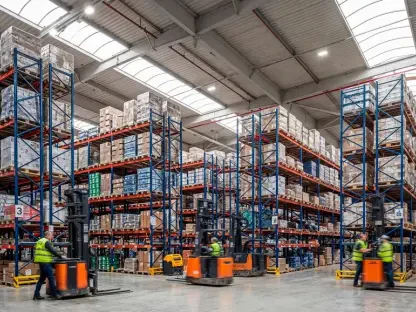In the competitive landscape of the distribution industry, companies constantly seek innovative measures to streamline operations and cut costs. United Natural Foods, Inc. (UNFI) has taken this challenge head-on, embarking on a strategic three-year financial recovery plan to enhance its distribution network’s efficiency. This initiative involves closing specific facilities in the U.S., including those in Allentown, Pennsylvania, and redirecting resources for optimal productivity.
Overview of the Distribution Industry
The distribution industry remains a cornerstone of global trade, facilitating the movement of goods from manufacturers to consumers. It plays a pivotal role in ensuring goods are available efficiently and on time across various markets. Presently, the industry is characterized by rapid technological transformations, influencing how operations are conducted. Key players in this space are leveraging advancements such as automation and artificial intelligence to gain a competitive advantage. Authorities in various regions impose regulations to ensure efficiency, fairness, and environmental sustainability, significantly affecting industry practices.
Key Trends and Market Drivers
Technological Advancements and Consumer Behavior
The industry witnesses a confluence of emergent technologies and shifting consumer behaviors. As consumers demand quicker delivery times and more personalized service, companies leverage technologies like robotics and artificial intelligence for automation and predictive analytics. These technologies help in understanding consumer behavior better and enhancing operational efficiency. The adoption of technology is both a driver and a solution, opening new avenues for innovation and addressing changing consumer demands effectively.
Market Insights and Projections
Market trends indicate a steady growth trajectory, with the distribution sector expanding to meet increased demand for efficiency and responsiveness. Current data suggests that investments in automation and technology will persist as primary growth drivers. Future projections underline the importance of sustainability and cost efficiency, positioning companies that swiftly adapt to these demands at a strategic advantage. Businesses anticipate more robust growth, supported by technological integration and a keen focus on aligning consumer preferences with operational capabilities.
Challenges and Solutions
Operating amidst various challenges, the distribution industry must navigate complex landscapes involving technological uncertainty, fluctuating market demands, and regulatory adherence. Technological challenges arise due to the rapid pace of change, necessitating significant capital investments and a skilled workforce to maximize potential. Market-driven challenges, such as erratic consumer demand, require adaptive logistical strategies. Companies can mitigate these obstacles by fostering collaboration within the supply chain, investing in employee training, and prioritizing flexible operational models to stay agile.
Regulatory Environment
Regulations shape the industry by setting standards ranging from environmental considerations to labor practices. Compliance remains non-negotiable, with industry players mandated to adhere to myriad guidelines that ensure fair competition, environmental protection, and consumer safety. New regulatory frameworks continue to emerge in response to technological advances, compelling companies to reform practices to align better with evolving standards. Security measures remain a focal point as data protection and operational integrity gain prominence within regulatory discussions.
Future Prospects and Innovations
Looking ahead, the distribution sector anticipates further innovations fueled by ongoing technological advancements. The integration of cutting-edge technology like the Internet of Things (IoT) and blockchain is expected to reshape how distribution networks operate, offering new levels of visibility and control. Anticipating shifts in consumer preferences towards eco-friendly options will likely prompt an increase in sustainable practices within the industry. As economic conditions influence globalization, companies may explore collaborative platforms and innovative models to maintain their competitive edge.
Conclusion and Recommendations
The industry’s current trajectory highlights the importance of embracing technological innovation and maintaining operational efficiency. Companies that succeed will be those that effectively balance cost management with technological adoption to meet consumer expectations. It is crucial to remain adaptive, focusing on robust training programs, sustainable practices, and strategic partnerships. Investment strategies should prioritize technology integration and collaborative ecosystems, preparing for an evolving landscape that values efficiency, sustainability, and responsiveness above all.









